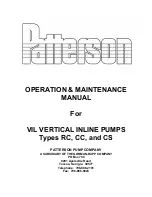
Instructions
12 | AN405821998738en-000102 - 118A5495A
© Danfoss | Climate Solutions | 2023.02 | LCA012A024
5.1 Leak detection
Never pressurize the circuit with oxygen or dry air. This could cause fire or explosion.
• Do not use dye for leak detection.
• Perform a leak detection test on the complete system.
• When a leak is discovered, repair the leak and repeat the leak detection.
Airtight test
1. Outline
• When the refrigeration cycle has been completed, test for airtightness on the entire equipment before heat insulating the piping. Airtight test pressure at
installation is 80 bar at the high, medium and low pressure sides.
• Charge nitrogen gas from the service port and oil service port at the high pressure side. At the medium and low pressure sides, charge the gas from the
service port at the medium pressure side and the service port at the low pressure side. Charge the gas in the order from the high to low pressure side.
2. Opening and closing of solenoid valve and expansion valve
• When the power is not supplied to the unit during the airtight test: Remove the coil from the medium pressure suction solenoid valve (SV-INJ), and open
it forcibly using a special magnet
• When the power is supplied to the unit at the airtight test. Turn the dip switch SW5-7 to ON (*). All of the solenoid and expansion valves open so that the
forcible opening is not necessary.
(*) Operating method of dipswitch 5-7
1 Turn the dipswitch to ON when the power supply is turned OFF.
2 Turn the power ON.
3 Turn SW5-7 to OFF (down) upon completion of test. (Power may be turned ON.)
3. Test method
• Do not pressurize to specified pressure all at once, but raise it gradually.
• Stop the pressurizing at each step of 10 bar, 30 bar and 70 bar, and leave it alone to see if the pressure drops.
• Raise then the pressure to the design pressure, and record the ambient temperature and the pressure.
Apply a foam liquid over the surface. If no foam generates, it passes the test. It passes the test also if the pressure does not drop after leaving it alone for
approx. a day under the specified pressure.
It is necessary to apply correction for ambient temperature variation.
Example for 1 K (Kelvin) Ambient Temperature difference:
T1=20°C = 293K; (20 +273K)
T2=21°C = 294K; (21 +273K)
PT1=80,0 bar; PT2=?
PT2 = PT1*T2/T1 = 80.0bar*294K/293K = 80.3bar
Therefore, 1K temperature difference can cause a 0.3 bar pressure difference.
Absolute pressure = Gauge pr 1.0133 (bar)
(Gauge pressure is the pressure indicated on the manifold.)
If the pressure drops, it leaks at some places. Find and repair the leak spots.
When it leaks, check welded section and screwed section using foaming liquid.
Absolute pressure at measurement = Absolute pressure at pressuring x ___________________________________
( 273°C + Temperature at pressurizing)
(273°C + Temperature at measurement)
Note
High, medium and low pressures of this unit are displayed at the 7-segment indicator on the control PCB. They are not displayed when the power supply is turned
off. In such occasion, check them by installing a gauge manifold at the service ports of high, medium and low pressure sides.
(For the location of service ports, see the following figure.)
When venting the gas, start from the low pressure side. (Take care not to make the low pressure side of compressor higher than the high pressure side.)
5 – Pressure test
• Make pressure test on pipe work at 1.1 x PS.
• The condensing unit itself doesn't need to be pressure tested because it has been already done in factory.
• Remove safety valve protecting evaporator. Don't forget to put them back again on circuit before leak test.
Work sequence
End of refrigerant piping
N
2
gas pressurizing
Pressure drop check
Passed
Check/correction of leak
Fig. 14













































